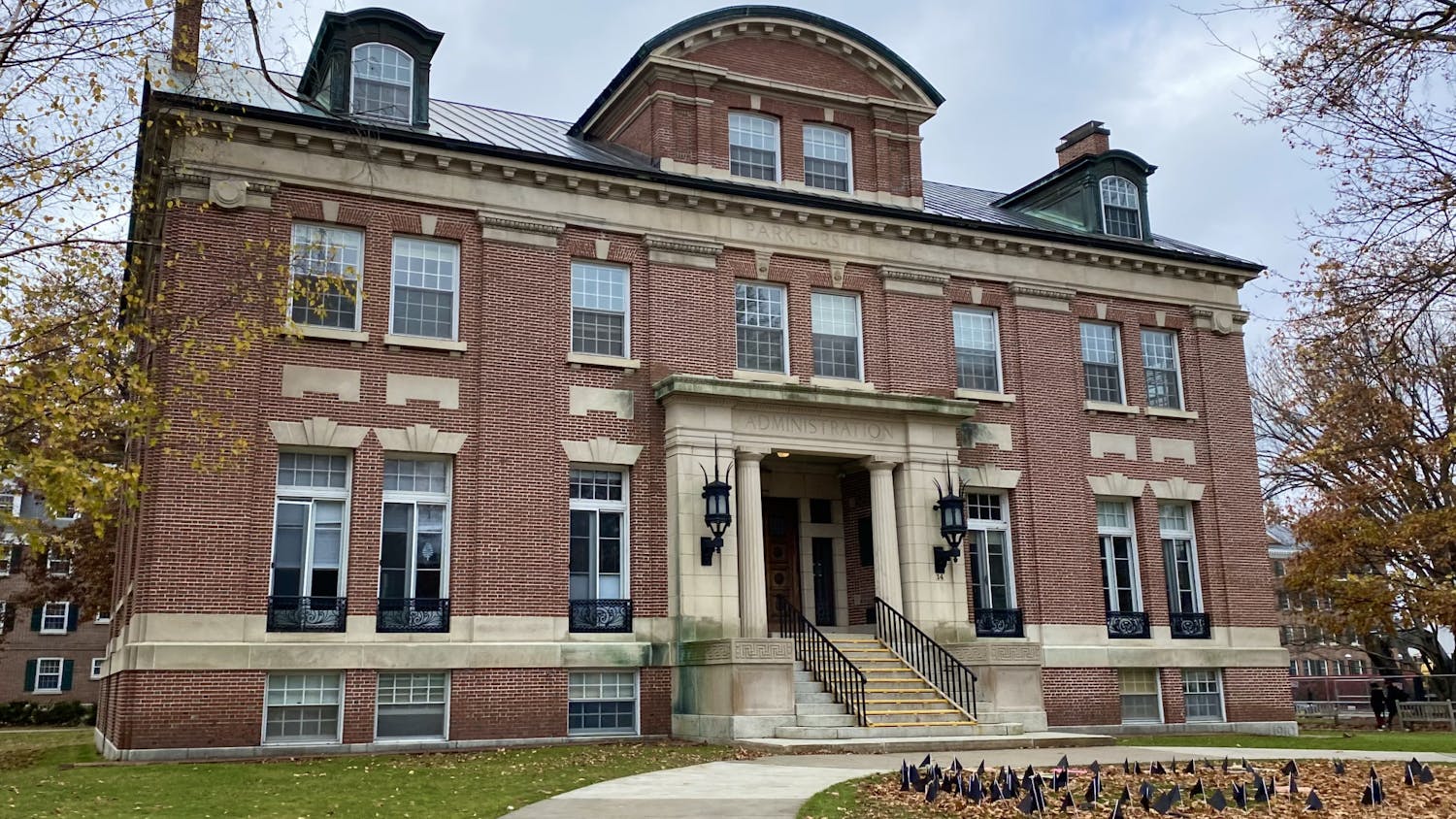During an annular solar eclipse on Oct. 14, NASA launched three rockets into space for the Atmospheric Perturbations around the Eclipse Path mission. Aboard these rockets were instruments developed by physics and astronomy professor Kristina Lynch and a group of Dartmouth undergraduate and graduate students in her lab. The devices collected data on the solar eclipse’s effects on ion-temperature in the Earth’s ionosphere. Lynch sat down with The Dartmouth to discuss her work on the tools and the importance of studying how Earth’s environment affects the ionosphere.
Could you explain the goal of NASA’s Atmospheric Perturbations around the Eclipse mission and how the instruments you designed advance this goal?
KL: There’s the Earth, there’s the atmosphere, and above it is the ionosphere. In the ionosphere, there is less neutral gas, and it’s thin enough that when sunlight comes and breaks the atoms apart into electrons and ions, they don't immediately find each other again. So the gas in the ionosphere is charged to electrons and ions and not just neutral molecules, which means that it responds not just to collisional effects like wind, but also to electric and magnetic forcing. It’s called a space plasma environment.
The eclipse provides a very well-defined perturbation to that environment. If I disturb the atmosphere with this very well-known shadow, it tells me how good my understanding of that system is. This knowledge is very valuable. It is important in understanding the processes of our environment, and it also has a lot of commercial benefits for satellites in orbit.
How did you become involved in NASA’s Atmospheric Perturbations around the Eclipse mission?
KL: One of my graduate students here a few years ago is now a postdoc at Embry-Riddle. The Embry-Riddle research group is very involved in these Eclipse studies. The instruments I was building were made to study the northern lights, but you can use that instrument to measure other things, too. The eclipse group thought it would be interesting to include the instruments with their mission. So we did.
What is the importance of studying the effects of Earth’s processes on the ionosphere?
KL: The reason I do it is for fundamental research. But, there are also commercial needs for understanding this as we move our use of our Earth up to, you know, three or 500 kilometers. All of the SpaceX satellites are at 500 kilometers. That’s exactly where the region that we’re studying is, and we need to understand how it works, how it responds to pushers and shutters and drivers and general day-to-day variability so that companies can protect the equipment they have up there.
Could you share some details about the instruments themselves? How do they work, and what specific measurements do they provide?
KL: The instrument measures the flow of space’s plasma. It is essentially a box. In the box there is a square set of screens. On the screens, we can put voltages to control which of the particles are able to get in there. We can turn off the low energy ones and just let the high energy ones in, so we can get the spectrum of the particles that are coming in. There is also what we call a preamplifier circuit. At the back of the little box, the gold plate, there is an anode that collects current. Then we actually use an Arduino, which is like the adult version of LEGO Robots, to monitor signals that are collected. We build them in-house. The structure gets thrown out of the main rocket, and as it is thrown it spins like a rifle bullet. Two of the sensors look out of the structure as it spins.
What was the timeframe for the design and creation of these instruments?
KL: I originally designed the instruments for my studies of the northern lights. When my colleague at Embry-Riddle had the opportunity to make these Eclipse rockets, he asked if we could make them copies of what we had already built. Rob Clayton, a grad student who got his Ph.D. here in 2013, and I developed the original versions of these back around 2015 to 2017. Since then, we have modified them a lot. The first ones we built, we actually built the whole structure, but now NASA builds the back end that includes the batteries and the radio and so on.
How were Dartmouth students involved in building the instruments?
KL: We use the science division machine shop for the actual machining. We also have the guidance of the science division electronic shop. A lot of the original design came from students. The shield boards were a computer science senior thesis, and they were reworked two years ago by an engineering student for their senior thesis. A lot of the analysis done on the instrument itself is done by graduate students, but a lot of the fabrication, building up the screens and collecting the screws, is done by undergrads. I usually have about 10 undergraduates at a time that do about 10 hours a week in my lab. It’s a combination of our professional engineering staff here at Dartmouth and the students who come through.
The rockets were launched on Oct. 14. Can you tell us anything about the preliminary data that you’ve received from the mission so far?
KL: We haven’t gotten our hands deeply enough into the data yet. We have our own data from our instrument, but the instrument is spinning and tumbling and coning, which means that the sensor is rotating. And so we need to actually create what’s called an attitude solution. This is similar to what’s inside a Nintendo Wii. Inside a Wii is a little attitude monitor which actually measures acceleration, spin and a magnetometer. And from that sensing, you can figure out which way you’re looking.
Will you continue to research this topic? Are there any other projects you are working on at this time?
KL: My involvement with the Eclipse mission is sort of a collegial friendship, but my heart is in the northern lights. We just found out that we’re going to do a new rocket for the northern lights. It will go out in 2026 out of Alaska. I think pulling this set of instrumentation together has been very helpful to identify all of the stuff we need to fix and improve before then.




